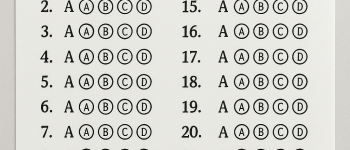Rise of Quick Commerce in India
29th Jul 2025
Read

TABLE OF CONTENTS
- What exactly is Quick Commerce?
In just a few years, shopping in India has changed dramatically. What used to take a few days through e-commerce now takes just a few minutes, thanks to the arrival of Quick Commerce (Q-commerce). Whether it's milk, bread, eggs, or even last-minute party supplies, platforms like Blinkit, Zepto, Swiggy Instamart, and Amazon Now are delivering these essentials to customers' doorsteps in just 10 to 30 minutes.
This fast-paced shopping model is no longer a niche. It's grown into a multi-billion-dollar industry, reshaping urban lifestyles. A recent report by Eternal Ltd revealed that Blinkit—its q-commerce arm—has overtaken Zomato (its food delivery brand) in terms of net order value in the April-June quarter of FY 2025-26. This marks a major milestone in the shift toward fast, localised delivery models.
But with all its speed and convenience, q-commerce also brings a fair share of challenges—from the treatment of gig workers to questions of profitability and sustainability. Let's break down what q-commerce really is, how it works, and what lies ahead for this booming sector.
What exactly is Quick Commerce?
At its core, q-commerce is about getting your daily-use items—like groceries or medicines—delivered to your home as fast as possible, often in under 30 minutes. Unlike regular online shopping, which may take a day or two, q-commerce operates on hyper-local logistics. This means using smaller, nearby warehouses called dark stores, which are stocked with essential goods and are not open to the public.
These stores are supported by real-time technology that helps in picking, packing, and dispatching items immediately. Delivery partners—usually on two-wheelers—navigate through optimized routes to reach the customer quickly.
How Q-Commerce Platforms Function?
Major players like Blinkit, Zepto, and Swiggy Instamart have built a tech-heavy, logistics-driven model to ensure fast delivery. Here's how they make it work:
1. Dark Stores
These are essentially mini-warehouses located in densely populated areas. They hold a carefully selected range of fast-moving products and allow quick turnaround on customer orders.
2. Smart Technology and Logistics
Apps instantly send orders to the nearest dark store. Inside the store, dispatch software guides workers to pick items quickly. Deliveries are managed using GPS tracking and routing algorithms.
3. Revenue Streams
Q-commerce platforms make money through:
• Delivery charges (sometimes waived).
• Commissions or promotional fees from brands.
• Margins on product sales.
• Selling their own branded products with higher profit margins.
How It All Started: India's Q-Commerce Timeline
Year Event
2013 Grofers launched in Gurugram with 90-minute delivery service.
2016 Shifted to an inventory-led model for better control.
2019 Grofers' revenue crossed ₹2,500 crore.
2020-21 COVID-19 boosted demand for contactless, fast deliveries.
2021 Grofers became Blinkit, offering 30-minute deliveries and fulfilling over 1.25 lakh daily orders.
2022-25 Market expanded with new players like Zepto, Instamart, and Amazon Now.
Today, India's q-commerce market is growing rapidly. According to Bernstein, it's expected to grow by 75-100% each year, hitting $5 billion by 2025 and nearly $10 billion by 2029.
Why Q-Commerce Matters: Its Growing Importance
1. Ultimate Convenience
Customers now expect instant service. Q-commerce meets last-minute needs—from cooking ingredients to over-the-counter medicines—with unmatched speed, especially for urban and tech-savvy consumers.
2. New Job Opportunities
Blinkit, Zepto, and others are employing thousands of gig workers, warehouse staff, delivery riders, and tech professionals. It has opened up new income avenues for youth, particularly during the pandemic.
3. Innovation in Supply Chain
These companies are using AI and data analytics to improve inventory planning and delivery. They also source goods locally, which helps small vendors and reduces delays.
4. Better Urban Infrastructure
The rise of q-commerce is pushing cities to rethink logistics—dark stores, micro-warehousing, and electric two-wheelers are becoming part of the cityscape.
5. Boost to the Digital Economy
The model thrives on digital platforms—UPI, RuPay, ONDC, and mobile apps—making online payments and digital commerce seamless and efficient.
The Challenges Ahead
1. Profits Are Still Elusive
Despite the hype, many q-commerce companies are struggling to make profits. Eternal Ltd's overall profit dropped by 90%, mainly due to Blinkit's expansion costs. High operational expenses and low average order values make the business tough to sustain.
2. Gig Worker Vulnerability
Fast delivery means delivery partners are under pressure to ride quickly, often in unsafe conditions. Many don't have insurance, accident cover, or job stability. The 10-minute delivery race raises serious safety and ethical questions.
3. Traditional Retail Is Suffering
Kirana stores and small retailers are losing business. A Datum Intelligence survey found that q-commerce reduced spending at kirana stores by $1.28 billion, and nearly 2 lakh kirana stores have reportedly shut down due to this pressure.
4. Environmental Impact
More deliveries mean more vehicles on the roads. This adds to traffic congestion, air pollution, and greenhouse gas emissions. Frequent packaging and small-sized deliveries also increase waste.
5. Impulse Buying and Health Risks
Fast shopping encourages impulsive, sometimes unhealthy consumption. There are also concerns about the freshness of groceries, especially dairy and perishables. The FSSAI has already issued warnings about food safety lapses on these platforms.
What the Government is doing and where It's falling short
Supportive Steps Taken
• Digital payments infrastructure like UPI and BharatNet makes online shopping smoother.
• ONDC is helping democratize digital commerce.
• FAME-II scheme is supporting the use of electric vehicles for delivery.
What more is needed
• Protecting gig workers: Clear laws, insurance, minimum wages, and working hour limits.
• Urban planning: More delivery zones, better traffic management, and EV charging stations.
• Consumer data safety: Stronger regulations to control targeting and ad algorithms.
• Level playing field: Encouraging fair competition and collaboration with local stores.
Balancing Growth with Responsibility
To ensure that q-commerce remains viable and fair in the long run, India needs a balanced approach. Here are some suggestions:
Area What Can Be Done
Worker Safety Mandatory insurance, health cover, and redressal mechanisms.
Food Safety Stricter audits and FSSAI-compliant handling practices.
Environment Use electric vehicles, pilot drone deliveries, and optimize delivery routes.
Support for Kiranas Partner with local shops for inventory and last-mile delivery.
Consumer Education Promote conscious buying habits through nudges and awareness campaigns.
Conclusion
Quick commerce is no longer just a trend—it's changing how people live and shop in India. The ease of ordering things within minutes has made it incredibly popular. But behind this convenience are complex issues related to profits, people, and the planet.
India now faces a crucial challenge: How can we support innovation while ensuring fairness, sustainability, and worker dignity? The answer lies in better rules, stronger safety nets, public awareness, and inclusive growth models. With the right balance, q-commerce can become a success story not just of speed, but of responsibility.
Feel free to use images in our website by simply providing a source link to the page they are taken from.
-- Epoch IAS
Explore By Category
Latest Posts
Share views on Rise of Quick Commerce in India
Please keep your views respectful and not include any anchors, promotional content or obscene words in them. Such comments will be definitely removed and your IP be blocked for future purpose.
 9th Aug 2025
9th Aug 2025
 27th Aug 2025
27th Aug 2025
 29th Jul 2025
29th Jul 2025
 29th Oct 2025
29th Oct 2025
 29th Jul 2025
29th Jul 2025
.png) 8th Aug 2025
8th Aug 2025
 30th Oct 2025
30th Oct 2025
 31st Oct 2025
31st Oct 2025
